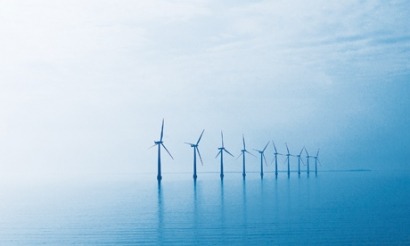
His statement came as his announced a new strategic agreement between the European Marine Energy Centre (EMEC) in Orkney (Scotland) and the Fundy Ocean Research Centre for Energy (FORCE) in Nova Scotia, Canada.
The two organizations will collaborate on the development and deployment of power generation from the sea.
Scotland’s national target for the production of electricity from renewable sources had been to generate the equivalent of 80 per cent of electricity consumption, with a 31 per cent interim target for 2011.
“Because the pace of development has been so rapid, with our 2011 target already exceeded, we can now commit to generating the equivalent of 100 per cent of Scotland’s own electricity demand from renewable resources by 2020,” Salmond said. “By then we intend to be generating twice as much electricity as Scotland needs – just over half of it from renewables.”
Salmond said the excess electricity will be exported to other markets, although he refered only broadly to the UK and Europe, as opposed to specific utility customers.
“We will now move still further and faster to secure our place as the green energy powerhouse of the continent of Europe,” he vowed.
According to Salmond, offshore wind will play a key role in achieving its ambitions. Toward that end, the Scottish government has collaborated with a pair of economic development organizations to develop http://www. offshorewindscotland.org.uk, a web portal to showcase what Scotland has to offer the renewable energy industry and introduce new investors to the sector.
Scotland also has an estimated quarter of Europe’s offshore wind and tidal energy resource and a tenth of its potential wave capacity.
Lease agreements have been secured for offshore wind developments in Scottish waters with the potential to generate around 10 GW of electricity by 2020, while similar agreements have been signed for six wave and five tidal projects in the Pentland Firth and Orkney Waters with a potential capacity to generate 1.6 GW.
“Our research and development capability in low carbon energy is growing exponentially,” Salmond said. “For example, the European Marine Energy Centre in Orkney, a world-class testing facility and the first to be grid-connected, will be near full capacity over the coming months. And I am delighted that today at this conference EMEC will be signing a strategic agreement with the FORCE tidal test facility at Fundy in Nova Scotia.
“That pooling of resources and skills between Scotia Old and Scotia New should move this exciting sector even further forward as we approach the stage where large arrays become a reality,” he continued. “This can help unlock as much as $6 billion of investment, highlighted in a technical report published yesterday, to deliver the world’s only commercially-leased wave and tidal projects in the Pentland Firth and Orkney waters.”
For additional information:

